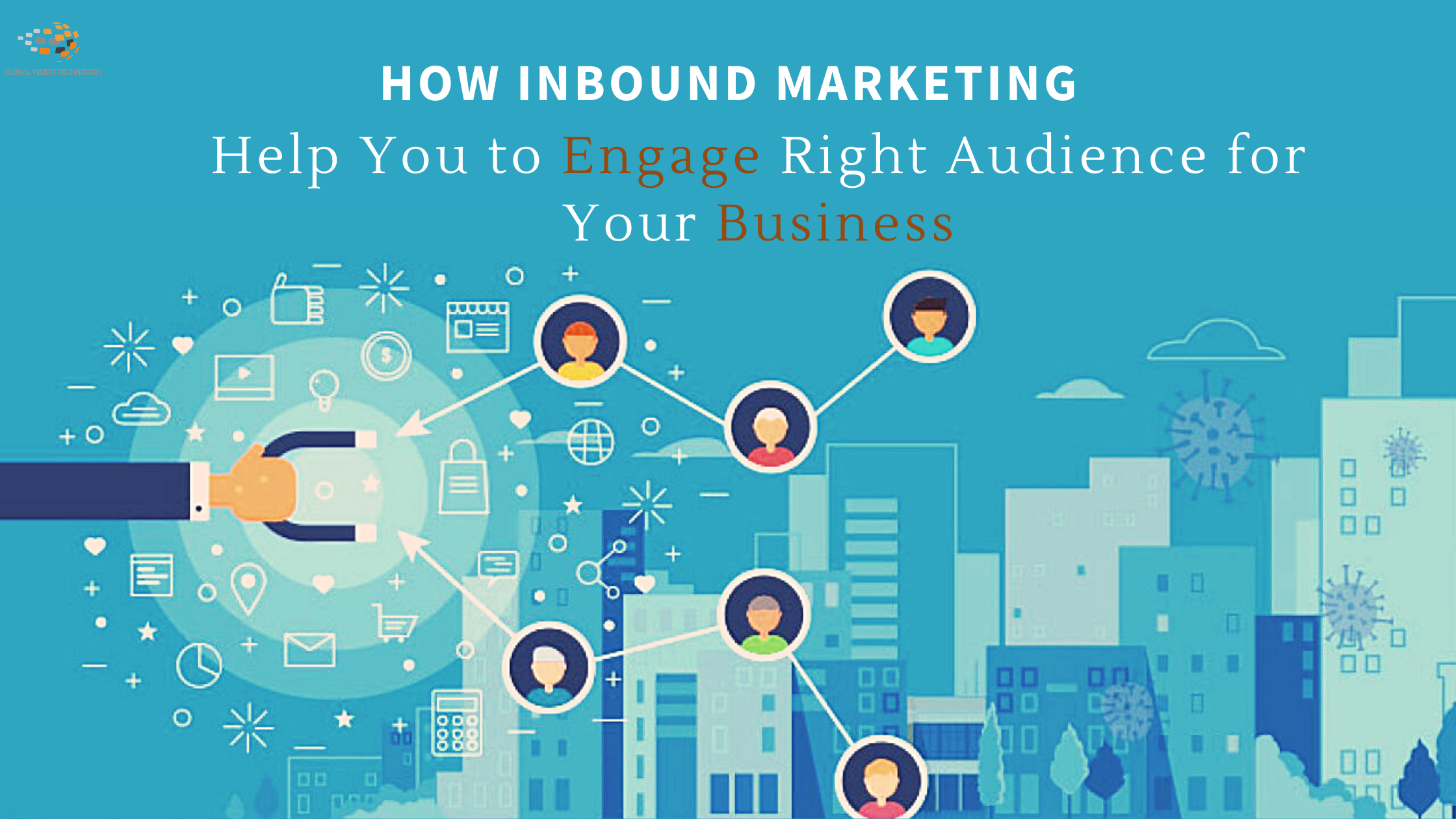
How Inbound Marketing Help you to Engage Right Audience for your Business

Marketing has changed over the years drastically. It is getting extremely important to determine the most effective ways to get leads by spending your marketing budget wisely.
Inbound Marketing is a strategy that focuses on attracting customers or leads via focusing on creating quality content that pulls people towards your company. content. It uses different tools of marketing like social media marketing, content marketing, search engine optimization, etc. to grow your website traffic by building meaningful relationships by empowering your target audience with relevant content. By giving out helpful information, you naturally attract inbound traffic that you can ultimately Convert, Close, and Delight over time.
How to engage target audience in Inbound Marketing
When it comes to inbound marketing, the more you invest, the greater your return. Creating killer content is more important for lead generation. Rather than focusing on ‘enough’ content, marketers should be focused on publishing quality content. Content that educates their audience and builds brands and authority. The right content will be shared, increasing your reach, increasing awareness, increasing trust, and increasing leads.
Here’s to get started:
- Identify your target audience and learn all you can about them. You can’t write content to inform your customers until you know what makes your audience tick.
- Determine your unique, compelling story. Why should your audience listen to you?
- Create and execute your content calendar.
These strategies will help you effectively market to your target audience the inbound way.
1. Finding your Target Audience
Before you can effectively attract and convert leads through inbound, you need to know who you are dealing with. One of the ways through which you can find and engage your target audience with content would be to visualise a reader which represents that particular group. For example, if you are running a blog about power tools, your reader persona would most likely be male. He would also be over 30 years old, working as a contractor or on DIY projects.
Personas are composite, personalized representations of your audience, complete with likes/dislikes, demographics, behaviours and pain points. Depending on your business, you will most likely have multiple personas. As you might expect, it helps to identify and understand the broader market you’re after, before narrowing it down to specifics. The process is as follows:
- Look at existing marketing strategies
- Identify existing customer groups or segments
- Review your competition and other businesses in the market
- Know your product and services, as well as how they contribute to consumers
- Consider the overall market you are accommodating
- Analyze any data and information you have, especially performance details
- Use everything you’ve collected thus far to discern your true or ideal target audience
2. Build Your buyer persona
Who are your “buyer personas,” or ideal customers? You need to get right to the nitty-gritty of your typical or perfect person. The more granular you can get with the information, the better. Look at traits such as:
- Demographics: This information can include anything from age to gender, geography, to marital status.
- Psychographics: This information goes beyond the demographics and identifies more about a customer’s psychology, interests, values, attitudes, behaviors, and much more.
- Technographic: This information relates to the devices. Software and other “technical” attributes of your audience.
All types of information are essential in developing your customer profile. The demographic information will help in identifying the kind of person who will potentially buy your products and services. The psychographic information takes it a bit further and helps you to understand the reasoning behind why the customer may make the purchase.
3. Ways to Engage Your Target Audience with Content
Now that you’ve identified your audience, the next step is to look at how your audience engages with your site. There are a few ways you can find out what content is performing well on your site and driving traffic. First, discover which pages on your site have the highest page views. Then, you’re going to want to examine which content is actually driving people to your site.
And lastly, you’ll want to understand what type of content is performing best for each acquisition channel. In other words, what’s bringing in visitors from organic search, social media, or referrals?
- Make It About your Audience
Your main goal is to run a blog or business that will provide you with an income. However, the only way you can achieve that is by putting your audience first. By helping them solve their problems and providing useful, applicable content, you will set yourself apart from the rest. You can start even earlier by creating a responsive website for your target audience needs. If they decide to make a purchase, they will think of you instantly.
- Points out the Benefits
A lot of business owners get so caught up in promoting their product or service that they forget one thing. The audience doesn’t care about the features. It cares about the benefits those features can provide them with. So, focus on benefits instead of features if you want to engage your target audience.
- Urgency can Help
By introducing an element of urgency, and hinting that something is available for a limited time only, you can get your target audience to take notice. And it’s not just about offering a weekend discount. You can also create content that promises to help the reader instantly.
- Insert a Call to Action
A call-to-action (CTA) is a visual way to convince visitors to take action. A compelling CTA is bold, short, clear, and action-oriented. Place your call-to-action buttons in prominent and easy-to-find positions on your website the best part is they don’t even need to leave the page which makes it much easier for them to reach out.
4. Measure, Optimize, Repeat
Now that have a good idea of who your customer is and how to create content that converts, you can monitor your site’s analytics on a consistent basis. Set a schedule and commit to it. One way to make analysis easier is by developing a reporting template. Knowing what stats, you’re tracking and comparing month-to-month provides structure and clear goals. Knowing your audience is the fundamental key to any kind of marketing communication. To keep your audience engaged and attract new users, don’t forget to look at your stats and let the data help to inform your content strategy.
Conclusion
Instead of temporarily shooting up your sales, inbound marketing focuses on building long-lasting relationships and a positive brand reputation with the targeted audience. Find out how Global vision technology can help you attract, convert, and delight your audience by forming meaningful connections with them.



